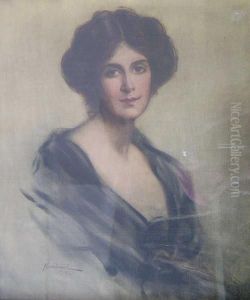Bror Karl Albert Kronstrand Paintings
Bror Karl Albert Kronstrand, born on November 14, 1850, in Säby parish, Jönköping County, Sweden, was an accomplished Swedish painter and professor known for his historical and religious paintings. He belonged to the era of academic art, a style characterized by meticulous attention to detail and a traditional approach to painting, which was prevalent in the late 19th century.
Kronstrand's artistic journey began at the Royal Swedish Academy of Fine Arts, where he studied from 1869 to 1877. There, he honed his skills and immersed himself in the academic traditions of art that shaped his future works. His early career was marked by the influence of his instructors and the prevailing artistic norms of the time.
In 1879, Kronstrand moved to Paris to further his studies and was deeply affected by the vibrant art scene there. He absorbed influences from various art movements and incorporated French artistic sensibilities into his work. This period was crucial in the development of his painting style, which began to exhibit a blend of his academic training and the new techniques he encountered in Paris.
Upon his return to Sweden, Kronstrand became a reputable figure in the Swedish art world. His works often depicted scenes from Swedish history, mythology, and religion, resonating with a sense of national pride and cultural identity. He was also known for his portraiture, capturing the likenesses of notable individuals in Swedish society.
In recognition of his artistic contributions, Kronstrand was appointed professor at the Royal Swedish Academy of Fine Arts in 1889, a position he held until his retirement in 1916. Throughout his tenure, he influenced a generation of artists, instilling in them the principles of academic art while also encouraging the exploration of new ideas and techniques.
Kronstrand's legacy is preserved through his paintings, which can be found in various museums and collections in Sweden. His dedication to his craft and his role as an educator left a lasting impact on the Swedish art scene. Bror Karl Albert Kronstrand passed away on October 9, 1921, in Stockholm, leaving behind a body of work that continues to be appreciated for its historical significance and artistic merit.

